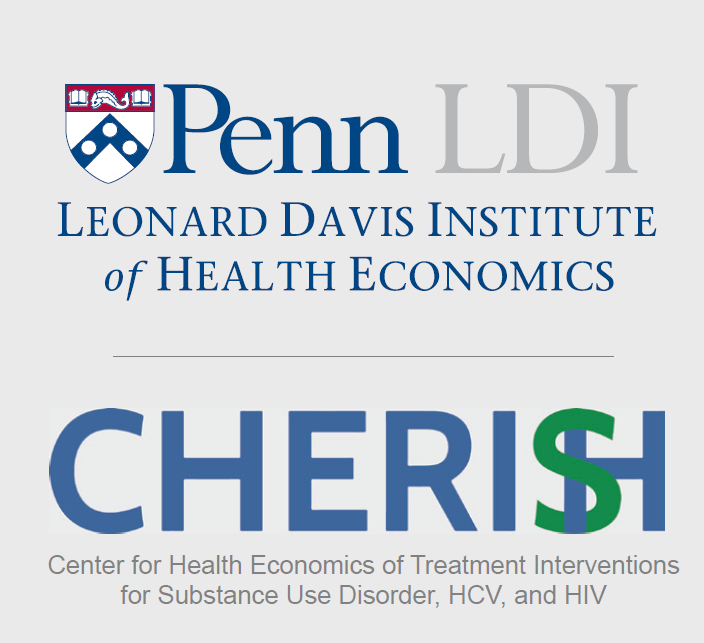Substance Use Disorder
Blog Post
Cost-effectiveness of two opioid use disorder treatments
A direct comparison
[reposted from the CHERISH blog]
One key strategy in reducing deaths from the opioid epidemic is to improve access to existing evidence-based treatments. Two new economic studies by CHERISH Investigators Drs. Sean Murphy, Kathryn McCollister, and Bruce Schackman can help providers, patients, and payers sort through alternative pharmacotherapies to prevent opioid relapse.
The US Food and Drug Administration has approved two medications for the treatment of opioid use disorder that can be prescribed by clinicians in an office-based setting: naltrexone, which is typically administered as an extended release injection (XR-NTX), and buprenorphine, which is often combined with naloxone (BUP-NX). The National Institute on Drug Abuse supported a clinical trial to assess the comparative effectiveness of initiating XR-NTX and BUP-NX in inpatient and residential treatment programs and continuing treatment in an outpatient setting. The clinical trial results published in the Lancet in January 2018, showed it is more difficult to initiate patients on XR-NTX than BUP-NX in this population, and this negatively affected overall relapse outcomes. However, once initiated, both medications were equally safe and effective.
In a new cost-effectiveness analysis published in the Annals of Internal Medicine on December 18, 2018, Dr. Murphy and colleagues found BUP-NX was preferred to XR-NTX as the first line of treatment from the healthcare sector and societal perspectives, due to the similarity in effectiveness between the therapies and the higher cost of the XR-NTX treatment strategy. The higher cost of the XR-NTX treatment strategy was driven largely by higher medication costs and the longer detoxification period required before starting treatment with XR-NTX. This higher cost was not associated with significantly better outcomes measured in QALYs or abstinent years gained; thus, a reduction in the cost of the XR-NTX injection and less costly modes of treatment initiation would likely improve its relative economic value.
In the cost analysis in the American Journal of Managed Care, CHERISH Investigators Drs. Kathryn McCollister, Sean Murphy, and Bruce Schackman compared the cost of administering BUP-NX and XR-NTX during program start-up, inpatient detoxification and 24 weeks of follow up post-detoxification. From a healthcare sector perspective, the mean 24-week cost per participant was higher for XR-NTX than for BUP-NX due to longer outpatient medication management visits and higher medication costs. The analysis concluded that providing BUP-NX and XR-NTX to patients receiving inpatient detoxification generates modest additional costs to providers, although the costs associated with attending medication management visits may be a barrier for some patients considering these treatments.
“These are both very effective medications for the treatment of opioid use disorder. Narrowing the cost gap by lowering the cost of XR-NTX and shortening the induction period would allow more people to access both alternatives according to their clinical needs and preferences,” Dr. Murphy said. “Another way to reduce healthcare sector costs would be to identify the subset of people who are most likely to achieve superior outcomes on XR-NTX.”
Improving access to evidence-based pharmacotherapy for opioid use disorder remains a priority in addressing the opioid epidemic. Results from these analyses provides practical information on the types of cost incurred from the healthcare sector and patient perspectives to deliver BUP-NX and XR-NTX when treatment is initiated in inpatient and residential treatment programs. Further research identifying individuals for whom extended-release naltrexone and buprenorphine provide superior outcomes will have implications for how these findings are incorporated into policy decisions.

Sarah Gutkind is part of the Administrative Core of the Center for Health Economics of Treatment Interventions for Substance Use Disorders, HCV, and HIV (CHERISH), a NIDA-funded multi-institutional center.